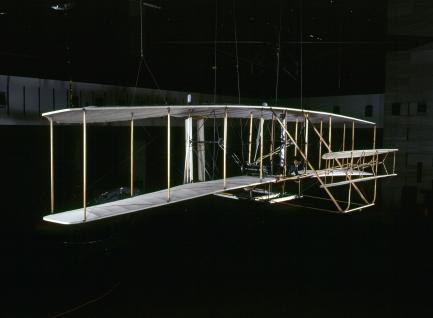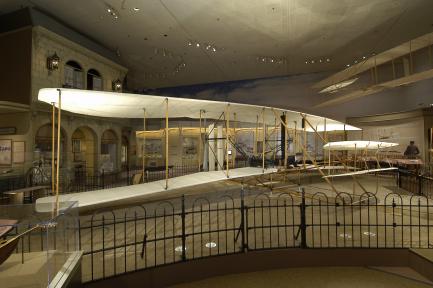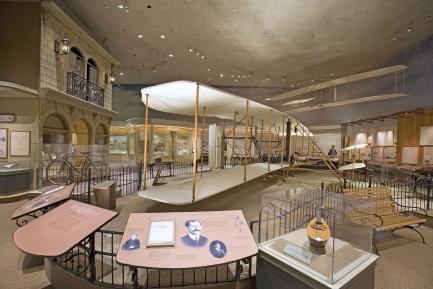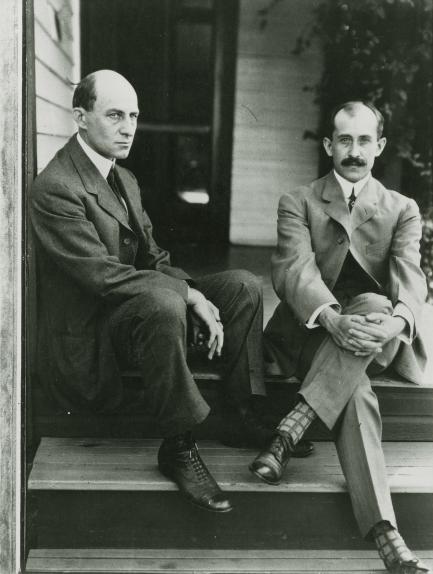First in Flight . . . Still the Wrights
When it comes to making news, themes such as a major discovery, a lingering mystery or a controversy are sure to grab headlines. The claim that Gustave Whitehead, not Orville and Wilbur Wright, made the first powered flight in an airplane has all of these elements and more. And when a new website, “Gustave Whitehead—Aviation Pioneer,” was launched in early 2013, it sparked media coverage and public attention.
The upcoming anniversary of the Wright brothers’ achievement at Kitty Hawk Dec. 17 is a good time to look at what the Wright brothers accomplished and explore the facts of the Whitehead story. Did Gustave Whitehead, a German immigrant who settled in Bridgeport, Conn., fly half a mile Aug. 14, 1901, and again Jan. 17, 1902, including a seven-mile flight over Long Island Sound?
The museum’s position is that the evidence that Whitehead beat Orville and Wilbur Wright remains unproven. The materials in this kit provide historical background and photographs. Here are some of the basic facts:
- Whitehead never flew again. Although Whitehead continued to build flying machines under contract for other experimenters as late as 1908, not one of them ever left the ground. Had the man who claimed to have flown seven miles in 1902 forgotten the secret of flight just six years later? Moreover, none of those later craft bear much resemblance to his supposedly successful machines of 1901–1902. Why did he abandon those craft and turn to very different configurations?
- One of only two witnesses named at the time refuted the claim. When interviewed later, James Dickie, named in the only local news article describing the supposed flight of Aug. 14, 1901, branded the story a complete fabrication. “I was not present and did not witness any airplane flight Aug. 14, 1901, I do not remember or recall ever hearing of a flight with this particular plane or any other that Whitehead ever built.” (The other individual named in the 1901 article could not be located in later years.)
- Contemporaneous report of failure. Just three months after Whitehead claimed to have made those long flights over Long Island Sound, a local paper carried an article titled, “The Last Flop of the Whitehead Flying Machine,” reporting that both of Whitehead’s aircraft had been failures.
- Contradictory testimony. Individuals who stated they witnessed Whitehead fly were not interviewed until decades later. There is the question of contradictory witness testimony taken—35 years and more after the supposed flights. The supporters swear by them; the skeptics are skeptical.
- Lack of photographs. Unlike the Wright brothers, who meticulously documented and photographed their flights, Whitehead later stated photographs of his flights “did not come out right.” The photograph analyzed on the “Gustave Whitehead—Aviation Pioneer” website has been identified as a photograph of a John J. Montgomery Glider, taken May 21, 1905, in San Jose, Calif.
- Associates skeptical. The individuals most closely associated with Whitehead, including those funding his effort or funding his work, doubted that he had ever flown. Bostonian Samuel Cabot, who employed Whitehead in 1897, described him as “…a pure romancer and a supreme master of the gentle art of lying.” John Dvorak, a Washington University instructor who visited Whitehead in 1904, reported that he “did not meet a single individual who had ever seen Whitehead make a flight.” Stanley Yale Beach, who supported Whitehead’s work for several years, agreed: “I do not believe that any of his machines ever left the ground.”
Whitehead was not the only individual who claimed to have flown before the Wright brothers—there are stories about at least a dozen men. But the Whitehead claim has attracted the most attention of the decades. It is complicated story, and relating it requires an in-depth look at the evidence. In addition to photographs, this kit contains:
- “The Flight Claims of Gustave Whitehead,” by Tom Crouch, senior curator of aeronautics, Smithsonian’s National Air and Space Museum
- Q&A
- Agreement, 1948, regarding the Wright Flyer and the Smithsonian Institution
# # #
SI-496-2013
Alison Wood
202-633-2376






